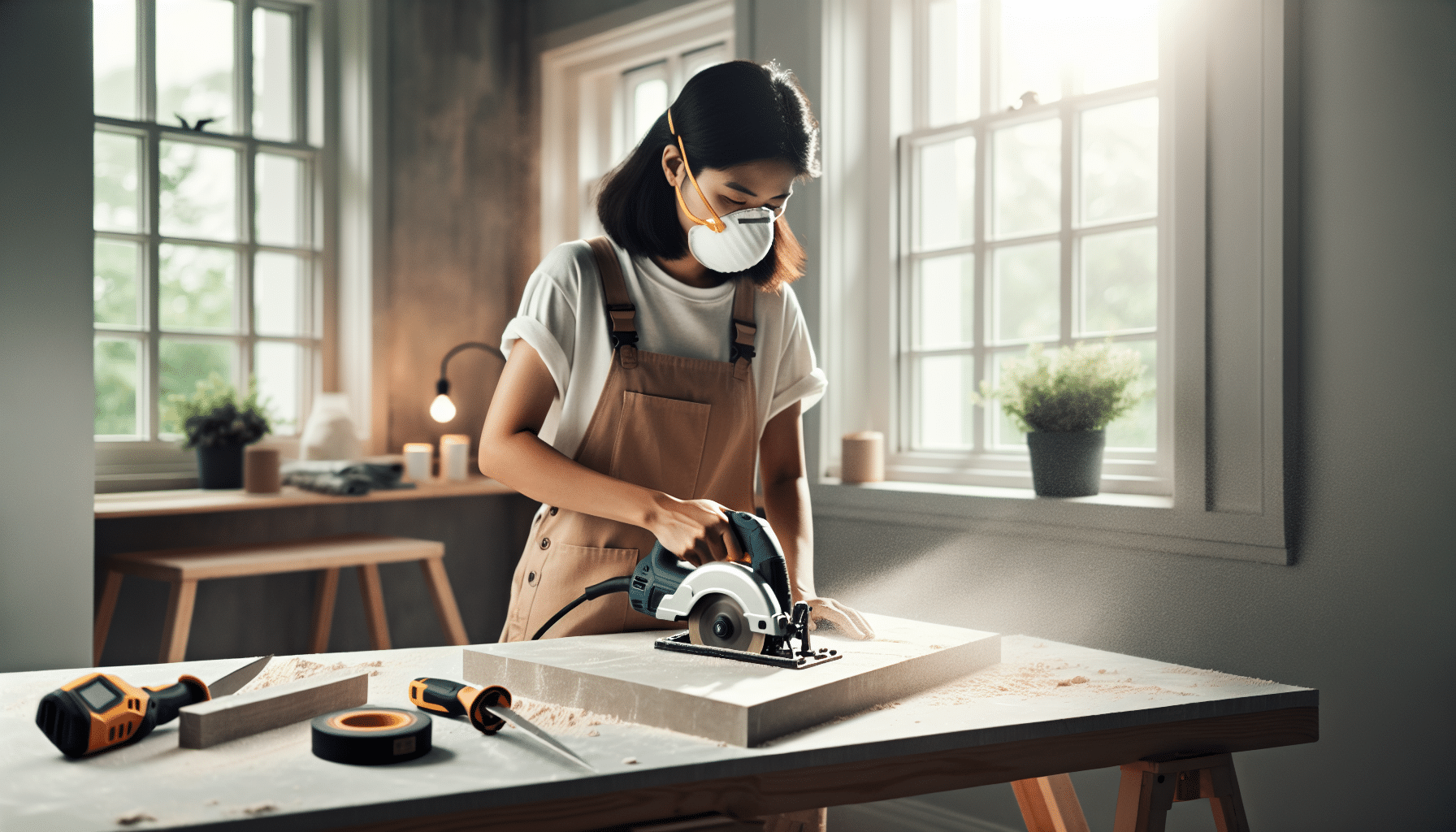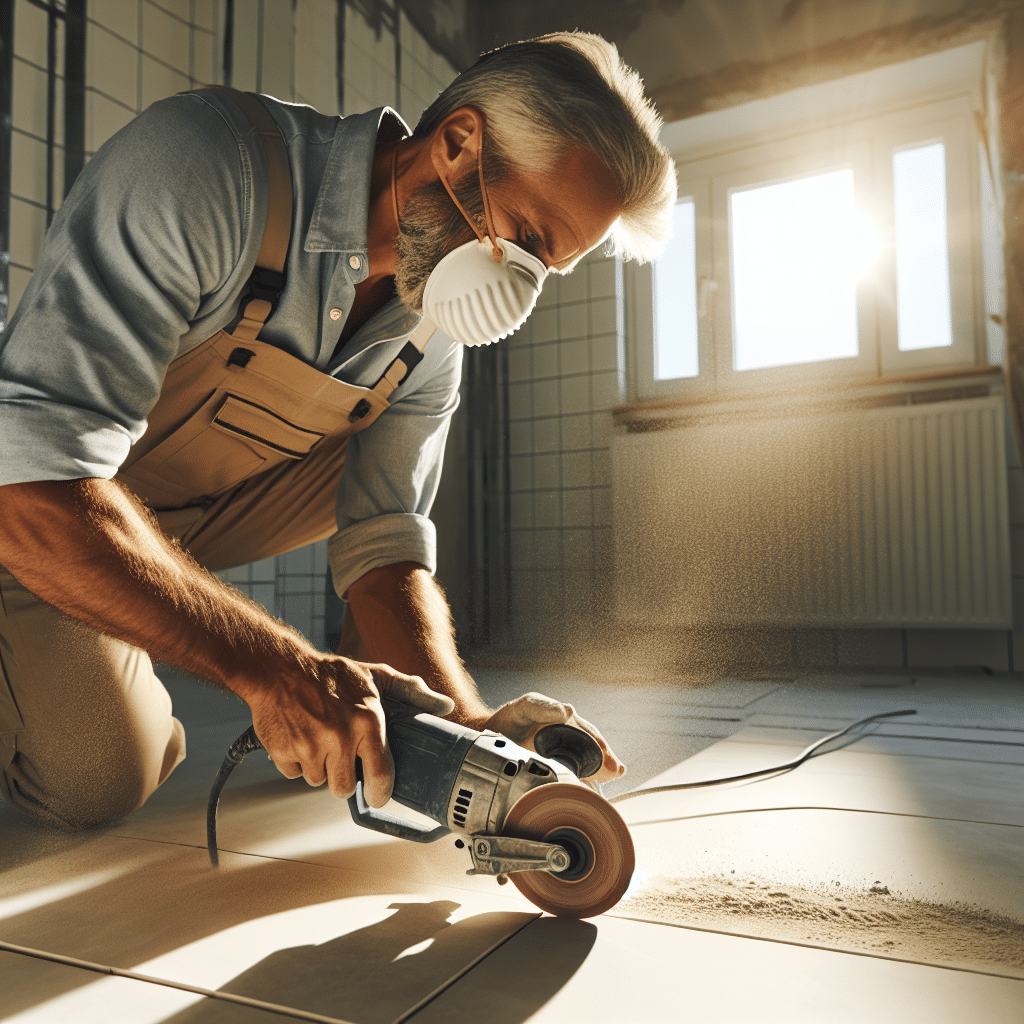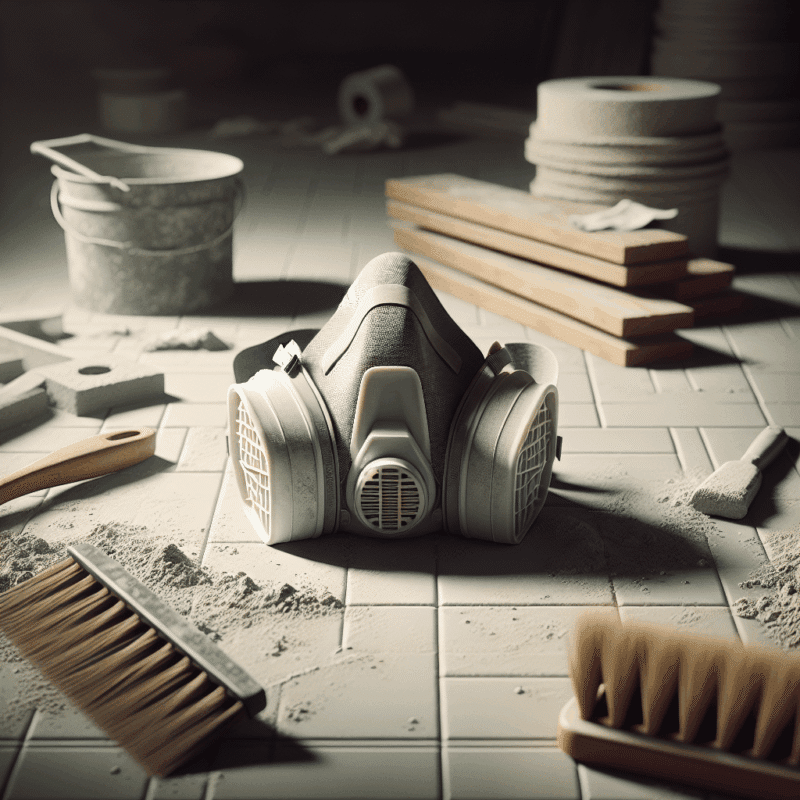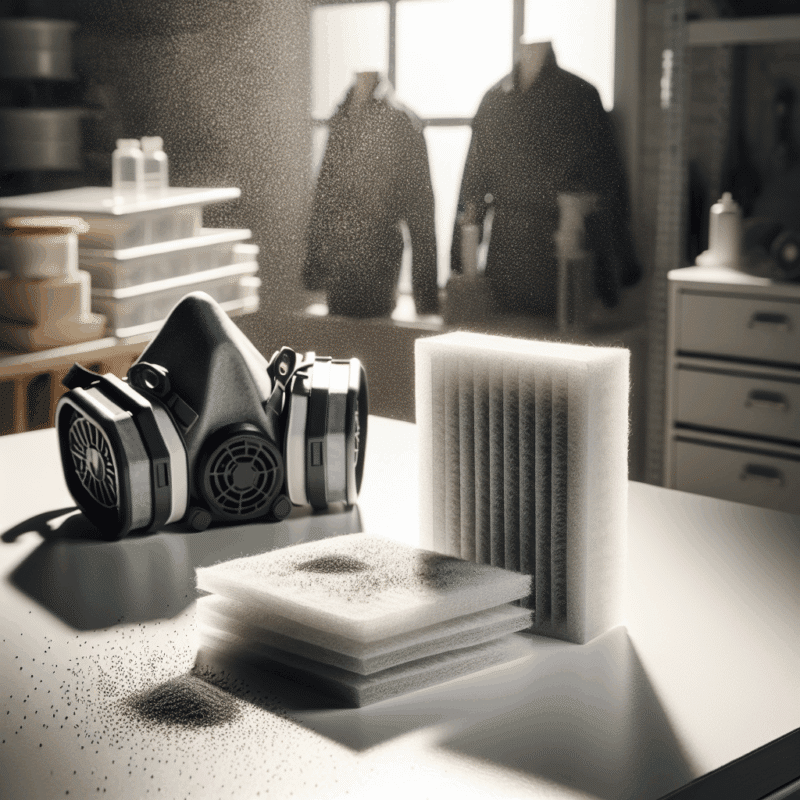Which Dust Mask UK: Best Masks for Plaster and Tile Cutting
In This Article
- Use at least FFP2-rated masks for plaster and tile dust.
- Reusable masks offer better value for frequent DIYers.
- Proper seal checks are essential for effective protection.
- Avoid using disposable masks beyond their rated life.
- Ventilation improves safety during dusty renovation jobs.
Why Plaster and Tile Dust Requires Proper Respiratory Protection
The risks of airborne dust particles
When engaging in plastering, sanding, or tile cutting, inhaling fine particles becomes a critical health concern. Plaster dust commonly contains silica, calcium sulphate, and other compounds that can irritate the respiratory system when airborne. Without the best dust mask for plaster, repeated exposure may lead to conditions such as silicosis, bronchitis, or even long-term respiratory disorders. The risk rises particularly during sanding dry plaster or cutting ceramic tiles, both of which release respirable crystalline silica—a harmful compound classed as a Group 1 carcinogen by the International Agency for Research on Cancer (<a href="Understanding dust mask protection levels for plaster“>source).
The prevalence of poorly ventilated environments during DIY work makes matters worse. Unlike commercial job sites with regulated ventilation systems, home environments often lack airflow controls. This increases the importance of personal protective equipment (PPE), especially a dust mask with a filter rating suitable for microscopic particles. Therefore, choosing the best dust mask for plaster is not a matter of convenience—it’s essential to your health.

What is the Best Dust Mask for Plaster Cutting?
FFP2 masks vs. standard DIY masks
The best dust mask for plaster cutting is one that not only filters out hazardous particles, but also fits securely and remains comfortable throughout your task. Standard DIY masks, often made from basic fibre materials or designed for minimal filtration, typically offer insufficient protection. In contrast, FFP2-rated masks provide considerable respiratory defence by filtering at least 94% of airborne particles—making them ideal for plaster and drywall work.
FFP2 masks bridge the gap between comfort and effectiveness, far outperforming the thin, single-layered paper masks frequently used in DIY settings. They are also often equipped with valves to reduce humidity and heat accumulation inside the mask, boosting user comfort during prolonged use. For heavier-duty or repeated renovation tasks, a reusable mask with FFP2 filtration cartridges is even more effective, providing long-term protection and economic value.
A standard paper mask might keep out visible dust, but only an FFP2 or better mask reliably stops invisible micro-particles from harming your lungs.
Choosing Masks for Tile Cutting Jobs
Dust levels during ceramic and stone tile cuts
Tile cutting, especially involving ceramic, granite, or stone materials, releases a significant amount of fine particulate matter. The friction caused by grinder discs or waterless cutters can project dust into surrounding airspaces. These particulates often contain crystalline silica—making unfitted or poor-quality masks a severe risk to your lungs. The intensity and duration of tile-cutting sessions mean that your exposure to this risk can be surprisingly high, particularly without an appropriate mask in place.
Therefore, for tile cutting, the best dust mask for plaster will often be suitable too, provided it is rated at least FFP2 or higher. Some professionals even opt for FFP3-rated masks, especially when working for extended periods or in areas without ventilation. It is also advisable to combine mask use with dust extraction tools or wet cutting techniques to minimise airborne particles. So, ensure that your mask is not only appropriately rated but also compatible with goggles or other PPE required during tile work.
Reusable Dust Masks vs. Disposable Options
Which is more cost-effective and sustainable?
If you regularly undertake DIY projects, investing in a high-quality reusable dust mask may be more economical and environmentally sound. Reusable models often include replaceable filters and improved construction materials that conform better to the face. This enhances both protection and long-term comfort.
Disposable masks, while initially cheaper, can become costly over time if used frequently. They also raise environmental concerns, as many are non-biodegradable. At minimum, look for masks marked FFP2 or FFP3 and certified to EN 149:2001+A1:2009 EU standards. Reusable brands such as CoreMask and FlowCore offer tight seals and upgradeable filter systems, making them some of the top choices for those who frequently plaster or cut tiles. These options allow a DIYer to maintain compliance with best safety practices while reducing landfill waste.
Understanding FFP Ratings in the UK
FFP1 vs. FFP2 vs. FFP3 for home renovations
The European standard for disposable filtering facepieces, EN 149, categorises masks into three classes: FFP1, FFP2, and FFP3. Each level corresponds to a specific filtration efficiency and leakage rate. FFP1 masks filter around 80% of airborne particles and are more suited for low-dust environments—not ideal for plaster sanding or tile cutting. FFP2 masks, on the other hand, filter a minimum of 94% of particulates and are better suited for medium-risk tasks, such as sanding painted plasterboards or cutting glazed tiles.
FFP3 masks are the most comprehensive, filtering at least 99% of particles. These are essential when working with high-dust materials in enclosed spaces. However, they can be slightly more restrictive in airflow, making them less comfortable for prolonged wear. When selecting the best dust mask for plaster, FFP2 often provides an excellent balance between safety and breathability. For exposure to intense silica dust, such as when using an angle grinder on floor tiles, an FFP3 mask might be required.
Best Practices for Dust Protection During Renovation
Room ventilation and breathing safety
Even with the best dust mask for plaster, your safety strategy must include proper room management. Always aim for active ventilation: open windows, use exhaust fans, or employ dust extractors to minimise particle concentration in the air. Setting up plastic sheeting to isolate worksites from the rest of the home is also a highly recommended containment strategy.
Do not forget to take regular breaks in fresh-air environments and check your mask frequently for dirt, tears, or degradation. A well-ventilated room, combined with high-quality respirators and regular cleaning routines, significantly reduces the risk of respiratory stress. Always do a fit-check prior to commencing work, and never reuse disposable masks past their intended life, even if they look clean. Such habits demonstrate respect for both your health and your workmanship.
How to Check for a Proper Mask Seal
Simple tips to ensure effective protection
Ensuring a secure seal around your nose and mouth is vital. No matter how advanced the filtration mechanism, leakage at the edges renders the mask ineffective. Begin by adjusting the nose bridge so it conforms tightly, then ensure the straps are snug but not overly tight. Breathe in and out sharply—your mask should slightly collapse inward when you inhale if it fits correctly.
Facial hair often prevents a full seal, so consider shaving if you’re undertaking prolonged renovation work. Another good practice is to cup your hands around the sides of the mask to feel for any escaping airflow. If in doubt, many manufacturers provide user guides and videos to demonstrate these steps. A correctly sealed dust mask is the linchpin of successful personal protection during any plastering or tiling job.
Which Filters to Use with Your Reusable Dust Mask
When and how often to change filters
Filters are the operational core of any reusable dust mask. Depending on the model, you may encounter particulate filters (P1, P2, or P3), gas filters, or combination filters. For plastering and tile cutting, P2 or P3 filters offer optimal particle filtration. The frequency of filter changes depends on usage duration, air quality, and filter type. A good rule of thumb is to replace filters after a particularly dusty job or every 8-12 hours of cumulative usage.
Visually inspect filters for signs of clogging—such as resistance to breathing or darkened surfaces. Never attempt to clean disposable filters; doing so may compromise their structural integrity. Refer to the manufacturer’s manual for the precise filter lifespan, and keep spares readily available. Brands such as FlowCore offer cartridge packs tailored for common building materials, helping ensure that your reusable mask remains as effective as intended.
Recommended Dust Masks for DIYers in the UK
Top products, including CoreMask and FlowCore
For UK-based homeowners and tradespeople, a few dust mask models consistently earn high praise. Leading options include the CoreMask Pro P2, which features an ergonomic design with a dual-strap harness, ensuring a secure fit even in active environments. The FlowCore ReFlex P3 Reusable is another notable model, combining comfort with industry-grade filtration for silica-rich tasks.
Also consider the JSP SpringFit FFP3 mask, popular among tradespeople for its compact foldability and built-in exhalation valve. For occasional DIYers, the 3M Aura 9322+ offers excellent FFP2 filtration at a disposable price point. Remember to check product certifications and always buy from reputable distributors. You can find more recommendations in our detailed respirator safety guide: Learn more about Dust Mask Selection and Safety for UK DIY.
Common Mistakes to Avoid When Using Dust Masks
Improper usage that reduces protection
Many users unintentionally negate their dust mask’s effectiveness by misusing it. Common errors include wearing the mask too loosely, using the wrong FFP level, or failing to replace filters regularly. Some even overlook manufacturer instructions or attempt to reuse disposable masks beyond their protective limit.
Wearing a dust mask below the nose or lifting it between tasks defeats the purpose entirely. Moisture from sweat or humidity also degrades surgical-style masks over time, so always choose material and design appropriate to your working conditions. For more guidance on safe usage techniques, visit our step-by-step safety checklist at Read a related article.
Final Safety Advice for Plastering and Tiling Projects
As with all home improvement tasks, preparation is paramount. Using the best dust mask for plaster is not just a precaution—it’s an absolute necessity for long-term health. Whether you’re skipping bathroom tiles, smoothing new walls, or refurbishing a kitchen, always prioritise air quality and personal safety through effective PPE, proper room ventilation, and good masking habits.
When combined with verified FFP-rated dust masks, routine filter checks, and a solid understanding of material risks, you can safely undertake even dusty jobs with confidence. Adopting a safety-first mindset not only protects your lungs but contributes to a more professional and disciplined approach to renovation. For updates on regulations and product certifications, consult the <a href="Top automated SEO tools for UK SMEs“>HSE UK Respiratory Protection Guide.
Great guide on which-dust-mask-uk-for-plaster-and-tile-cutting – Community Feedback
Which dust mask rating is best for plaster and tile dust?
For plaster and tile dust, an FFP2-rated mask is recommended in the UK, as it filters fine dust and airborne particles generated during cutting, plastering, and sanding.
Do you need a mask for plastering and renovating at home?
Yes, always wear a suitable mask when plastering or cutting tiles at home. Inhaling dust can cause breathing issues, so proper protection is essential for DIY safety.
Is a reusable dust mask suitable for multiple renovation tasks?
A certified reusable dust mask with appropriate filters provides versatile and reliable protection for repeated plastering, tile cutting, and general renovation projects.



